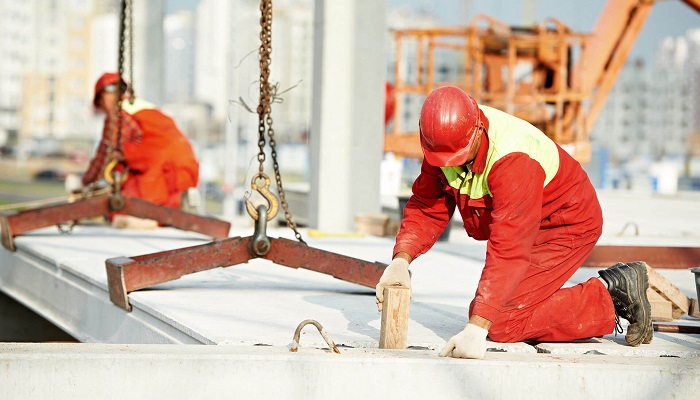It is worth noting that the construction employment went on to recover since the 2008 turmoil. There was a fall by 3 million workers in the EU alone that was witnessed between 2008 and 2014. However, the figure is still much below the peak of 15 million that was seen in 2008.
There is a consistency in labour imbalance that’s seen across the construction sector in Europe. There are almost half the occupations being classified as in shortage throughout the region pertaining to this sector. The latest EURES report on labor shortages and surpluses remarks the same.
The construction job vacancy rate has also seen a surge at a much higher pace vis-à-vis other sectors in the EU for 8 years as per the EURES report. In EU, apparently, in the Q2 of 2023, the construction sector went on to report the fourth highest rate of job vacancy across any sector in the EU.
Let us look into the reasons behind the labor imbalance in construction across Europe. Essentially there happen to be 3 major reasons that are pretty dominant-
The fact is that the working conditions that are prevalent within the sector have indeed put-off the would-be entrants. The charm of the sector has indeed taken quite a hit due to the reasons such as chemical exposure, tiring as well as painful positions which are repetitive in nature, demands that are too much physical in nature, and the fact that people are often required to be working outside. There might as well be an issue of climate change that may as well have an impact on this wherein one can go through high temperatures leading to more UV radiations. However, the conditions as far as the sector is concerned are indeed improving with technological innovations happening at a rapid pace, workers being paid better as well a bent for elevated health as well as safety practices that are pretty noticeable these days across the construction sites. All said and done, the construction sector’s image falls behind the enhancements that are made in it. The younger lot is very apprehensive in making a career in the sector and although there have been considerable inroads that have been made in terms of technological upgradations, the image of construction in people’s minds has not seen the light of the day and hence continues to remain unattractive. Apart from this one more reason why the sector isn’t appealing enough is the fact that there happens to be very high levels of self-employment as well as subcontracting taking place, thereby marring the industry’s reputation among the ones that may as well think about it as a career opportunity. The many tiers as far as subcontracting is concerned goes on to mean that there is indeed a high level of temporary employment and self-employment that is seen. All this leads to a level of fragmentation and at the same time also makes it very challenging the introduction of working conditions as well as pay which are enhanced. There is also a dearth in the way as far as information is concerned that the construction sector firms are able to pry out on how to get the right labor they are actually in need of.
One of the major reasons for the imbalance of labor and employment in the construction sector is the inability of the sector itself to make use of the available supply of labor. Especially, think about the fact that how many women does one come across as being a part of this booming industry? If we talk of numbers, the number of females employed in the sector was a dismal 8% of the total construction sector employment. And as a matter of fact, if one thinks that there is indeed a surge that has been witnessed in this figure, then hold on; the figure has just moved up 2%. If we talk about other sectors, the contribution of women comprises 46%, which is way higher vis-à-vis construction. Luxembourg, which happens to have the highest level in terms of female employment, comprises a mere 15.6% share. There are several reasons that come to mind why there is a dearth of women in construction when the sector itself is so huge and is, in fact, growing by the day. One that comes to mind is that there is a certain way of anticipating women, and the construction sector doesn’t fit well with that reference. Another reason is that the construction sector is indeed perceived to be masculine, and considering the working hours is a big jolt for work-life balance, which in a way affects women as there have caring responsibilities as well.
In addition to this, there is also a degree of dependence on other countries workers that some countries have.
When we talk of the structure pertaining to age, the sector has already begun to witness a major issue with many people ageing out of the sector. If we take a look at say Sweden for instance, it is expected that 10% of the workforce that is employed in the construction sector there might as well retire in another 4 years from now, i.e. in 2028. Not only that, Belgium by 2027 would be witness to almost 20,000 skilled workers hanging up their boots.
While there is going to be a modest rise in employment in occupation pertaining to 88,000 posts between 2022 to 2035, the requirement is going to be much higher due to the retirement of the existing workers. Almost a whopping 4.127,000 people are expected to leave the occupation in Europe in that time which means that there will be an additional requirement of 4,215,000 employees in the sector between the said period.
All the above elements do put forth the fact that there are indeed plentiful reasons that contribute to the imbalance of labor in the sphere of construction. However, it doesn’t mean that all of this is hard to overcome. Rather, with a timeline in place and putting in the in the right efforts at the right time and, of course, the right place will mean that a balance comes into play, thereby helping to support the sector and increase the quality of outcomes.






























